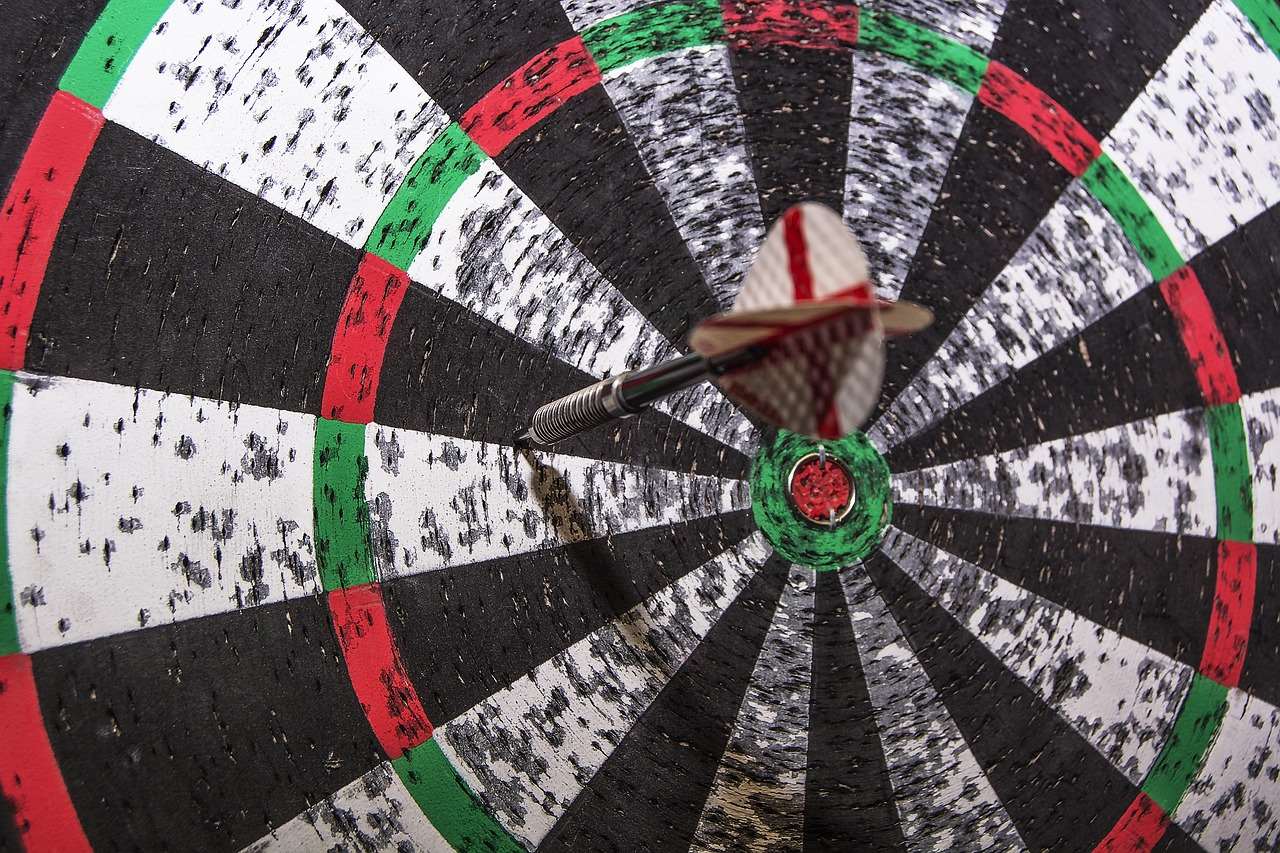A robust darts exhibition risk management plan is crucial for ensuring the safety and success of any darts event, mitigating potential hazards and protecting all involved. This article provides a comprehensive guide to developing and implementing such a plan, covering key areas from crowd control to equipment safety.
⚠️ Still Using Pen & Paper (or a Chalkboard)?! ⚠️
Step into the future! The Dart Counter App handles all the scoring, suggests checkouts, and tracks your stats automatically. It's easier than you think!
Try the Smart Dart Counter App FREE!Ready for an upgrade? Click above!
Why You Need a Darts Exhibition Risk Management Plan
Organizing a darts exhibition, even a relatively small one, comes with responsibilities. Ignoring potential risks can lead to injuries, damage to property, and even legal repercussions. A well-structured darts exhibition risk management plan proactively identifies these risks and outlines steps to minimize or eliminate them. This not only protects attendees, players, and staff but also enhances the overall experience and safeguards the reputation of the event. Considering the Business of Darts is paramount.
The Benefits of a Proactive Approach
- Enhanced Safety: Reduces the likelihood of accidents and injuries.
- Legal Compliance: Ensures adherence to relevant regulations and standards.
- Reputation Protection: Prevents negative publicity and maintains a positive image.
- Reduced Costs: Minimizes potential liabilities and insurance claims.
- Improved Event Experience: Creates a safer and more enjoyable environment for everyone.
Failing to address safety can have knock-on effects. Imagine the negative impact on a local pub or bar that hosts a poorly managed darts exhibition. It can damage their reputation and lead to a loss of customers.

Key Elements of a Darts Exhibition Risk Management Plan
A comprehensive darts exhibition risk management plan should encompass several key elements, each addressing specific areas of potential risk. These elements work together to create a robust framework for managing safety and ensuring a successful event.
1. Risk Identification
The first step is to identify potential hazards associated with the darts exhibition. This involves a thorough assessment of all aspects of the event, from setup to takedown. Common risks include:
- Crowd Management Issues: Overcrowding, uncontrolled behavior, alcohol-related incidents.
- Equipment Hazards: Damaged dartboards, faulty lighting, tripping hazards.
- Player-Related Risks: Injuries from dart throws, accidental collisions.
- Fire Hazards: Electrical faults, flammable materials, lack of fire safety equipment.
- Security Threats: Unauthorized access, theft, vandalism.
Think about how the how darts events help pubs bars and consider the venue and its specific challenges when identifying risks.
2. Risk Assessment
Once the risks have been identified, they need to be assessed based on their likelihood and severity. This involves determining how likely each risk is to occur and what the potential consequences would be. A simple risk assessment matrix can be used to categorize risks as low, medium, or high.
For example:
- High Risk: Risk with a high likelihood of occurrence and severe consequences (e.g., a fire in a crowded area).
- Medium Risk: Risk with a moderate likelihood of occurrence and moderate consequences (e.g., a tripping hazard causing a minor injury).
- Low Risk: Risk with a low likelihood of occurrence and minor consequences (e.g., a minor scratch from a dart).

3. Risk Control Measures
After assessing the risks, appropriate control measures need to be implemented to minimize or eliminate them. These measures should be proportionate to the level of risk and should be regularly reviewed and updated. Examples of risk control measures include:
- Crowd Management: Implementing crowd control barriers, hiring security personnel, establishing clear entry and exit points.
- Equipment Safety: Regularly inspecting and maintaining dartboards, ensuring adequate lighting, providing first aid kits.
- Player Safety: Providing safety briefings, enforcing rules of conduct, having medical personnel on standby.
- Fire Safety: Installing fire extinguishers, conducting fire drills, ensuring compliance with fire safety regulations.
- Security Measures: Implementing security checks, installing CCTV cameras, hiring security guards.
4. Implementation and Communication
The darts exhibition risk management plan is only effective if it is properly implemented and communicated to all stakeholders. This involves:
- Training Staff: Providing staff with training on risk management procedures, emergency response protocols, and first aid.
- Communicating with Attendees: Informing attendees about safety rules and regulations, providing clear signage, and making announcements.
- Coordination with Emergency Services: Establishing communication channels with local emergency services and coordinating response plans.
Effective communication is essential for creating a safe and responsible environment. Make sure all staff are aware of their roles and responsibilities.
5. Monitoring and Review
The darts exhibition risk management plan should be continuously monitored and reviewed to ensure its effectiveness. This involves:
- Regular Inspections: Conducting regular inspections of the event venue to identify potential hazards.
- Incident Reporting: Establishing a system for reporting and investigating incidents.
- Plan Updates: Regularly reviewing and updating the risk management plan based on feedback, incident reports, and changes in regulations.
Don’t treat your risk management plan as a static document. It should be a living document that evolves as the event progresses and new risks are identified. Analyzing darts impact local economy study can also inform risk assessment.
Specific Risks and Mitigation Strategies
Let’s delve into some specific risks commonly associated with darts exhibitions and explore effective mitigation strategies.

Dart-Related Injuries
One of the most obvious risks is injury from darts. This can range from minor scratches to more serious eye injuries. Mitigation strategies include:
- Safe Dartboard Setup: Ensuring dartboards are securely mounted at the correct height and distance.
- Player Etiquette: Enforcing rules of conduct regarding dart throwing, such as waiting for players to retrieve their darts before approaching the board.
- Protective Barriers: Installing protective barriers around the dartboard area to prevent accidental dart throws from hitting spectators.
- First Aid Availability: Having a well-stocked first aid kit and trained personnel on hand to treat injuries.
Crowd Control and Alcohol Consumption
At darts exhibitions, especially those held in pubs or bars, managing crowd behavior and alcohol consumption is crucial. Strategies include:
- Security Personnel: Hiring sufficient security personnel to monitor the crowd and address any unruly behavior.
- Alcohol Management: Implementing responsible alcohol service policies, such as limiting the number of drinks served to each person.
- Clear Signage: Posting clear signage regarding acceptable behavior and alcohol consumption.
- Designated Areas: Creating designated areas for drinking and separating them from the main playing area.

Slips, Trips, and Falls
Slips, trips, and falls are common hazards at any event, and darts exhibitions are no exception. Mitigation strategies include:
- Floor Maintenance: Ensuring floors are clean, dry, and free of obstacles.
- Adequate Lighting: Providing adequate lighting to prevent tripping hazards.
- Cable Management: Properly managing cables and wires to prevent tripping hazards.
- Warning Signs: Posting warning signs in areas where there may be potential hazards.
Keeping the venue tidy and well-lit is a simple but effective way to reduce the risk of accidents. It’s also a good idea to have staff regularly patrol the area to identify and address any potential hazards.
Fire Safety
Fire is a serious risk that needs to be addressed in any risk management plan. Mitigation strategies include:
- Fire Extinguishers: Installing fire extinguishers in strategic locations and ensuring they are properly maintained.
- Fire Alarms: Installing fire alarms and testing them regularly.
- Emergency Exits: Ensuring emergency exits are clearly marked and easily accessible.
- Fire Safety Training: Providing staff with fire safety training, including how to use fire extinguishers and evacuate the building.

The Importance of Insurance
No darts exhibition risk management plan is complete without adequate insurance coverage. Public liability insurance is essential to protect against claims for injury or damage to property. Event organizers should also consider cancellation insurance to cover losses in case the event has to be cancelled due to unforeseen circumstances.
Ensure your insurance policy adequately covers all potential risks associated with the darts exhibition. Review your policy carefully and consult with an insurance professional to ensure you have the right coverage.
Conclusion
Developing and implementing a comprehensive darts exhibition risk management plan is essential for ensuring the safety and success of any darts event. By proactively identifying and mitigating potential hazards, you can protect attendees, players, and staff, minimize potential liabilities, and enhance the overall experience. Remember to regularly monitor and review your plan to ensure its effectiveness and to adapt to changing circumstances. By taking a proactive approach to risk management, you can create a safer and more enjoyable environment for everyone involved. Now that you understand the importance of the risk management, consider exploring the economic benefits hosting darts event and how a safe and well-managed event can contribute to its success. Take the next step today and start developing your darts exhibition risk management plan to ensure your next event is a safe and successful one!
Hi, I’m Dieter, and I created Dartcounter (Dartcounterapp.com). My motivation wasn’t being a darts expert – quite the opposite! When I first started playing, I loved the game but found keeping accurate scores and tracking stats difficult and distracting.
I figured I couldn’t be the only one struggling with this. So, I decided to build a solution: an easy-to-use application that everyone, no matter their experience level, could use to manage scoring effortlessly.
My goal for Dartcounter was simple: let the app handle the numbers – the scoring, the averages, the stats, even checkout suggestions – so players could focus purely on their throw and enjoying the game. It began as a way to solve my own beginner’s problem, and I’m thrilled it has grown into a helpful tool for the wider darts community.